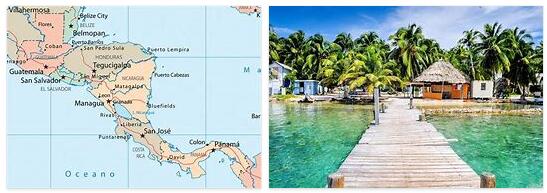Geography of Lawrence County, Mississippi
Lawrence County, located in the southern part of the state of Mississippi, is characterized by its diverse geography, including rolling hills, fertile plains, and numerous waterways. The county’s landscape, shaped by its location in the southeastern United States and its proximity to the Pearl River, plays a significant role in its climate, ecosystems, and human activities.
Location and Borders
Lawrence County is situated in southwestern Mississippi, bordered by Lincoln County to the north, Jefferson Davis County to the east, Covington County to the south, and Simpson County to the west. The county seat is the city of Monticello, which serves as the commercial and cultural center of the region. Check Usaers.com to learn more.
Topography and Landforms
The topography of Lawrence County is varied, with the northern part of the county characterized by rolling hills and wooded uplands, while the southern part of the county is more flat and agricultural. The landscape is shaped by its location in the Gulf Coastal Plain, with fertile soils and abundant water resources supporting a variety of natural habitats and ecosystems.
The county is also home to several parks, nature reserves, and recreational areas, including the Clear Springs Recreational Area and the Okhissa Lake Recreation Area. These natural areas provide opportunities for hiking, fishing, camping, and wildlife viewing, as well as serving as important habitats for native plant and animal species.
Rivers and Lakes
Lawrence County is traversed by several rivers and streams, including the Pearl River, the Strong River, and the Bogue Chitto River. These waterways provide important habitat for fish such as bass, catfish, and bream, as well as recreational opportunities for fishing, boating, and kayaking.
While Lawrence County is not known for its natural lakes, there are several reservoirs and ponds scattered throughout the region. These bodies of water provide habitat for fish and wildlife, as well as opportunities for recreational activities such as swimming, picnicking, and birdwatching.
Climate
The climate of Lawrence County is classified as humid subtropical, with hot, humid summers and mild, relatively dry winters. The region experiences four distinct seasons, with temperatures ranging from below freezing in the winter to highs in the 90s Fahrenheit (around 32 degrees Celsius) in the summer.
Summers in Lawrence County are hot and humid, with temperatures often exceeding 90 degrees Fahrenheit (32 degrees Celsius) during the day and dropping into the 70s and 80s Fahrenheit (around 21 to 27 degrees Celsius) at night. Thunderstorms are common during the summer months, bringing heavy rain, lightning, and occasional hail to the region.
Winters in Lawrence County are relatively mild, with temperatures typically ranging from the 40s to the 60s Fahrenheit (around 4 to 16 degrees Celsius) during the day and dropping into the 30s and 40s Fahrenheit (around 0 to 9 degrees Celsius) at night. Snowfall is rare in the region, with only occasional light dustings occurring during the winter months.
Spring and fall bring transitional weather patterns, with mild temperatures and changing foliage as the region transitions between seasons. These shoulder seasons are often considered the most pleasant times to visit Lawrence County, offering comfortable temperatures and clear skies for outdoor activities.
Vegetation and Wildlife
The diverse geography and climate of Lawrence County support a variety of vegetation types, including forests, wetlands, and grasslands. Native plant species such as oak, pine, and hickory dominate the landscape, providing habitat for a diverse array of wildlife species.
Mammals such as deer, raccoons, and squirrels are common in Lawrence County, as are a variety of bird species such as songbirds, waterfowl, and raptors. Reptiles and amphibians such as turtles, frogs, and snakes are also abundant, especially in wetland areas and along the banks of the county’s rivers and streams.
In addition to terrestrial habitats, Lawrence County is home to several wetland areas, including swamps, marshes, and riparian zones along the banks of the Pearl River and its tributaries. These wetland ecosystems provide important habitat for waterfowl, shorebirds, and other aquatic species, as well as serving as breeding grounds for migratory birds such as ducks and geese.
Human Impact and Development
Throughout history, the geography of Lawrence County has played a significant role in shaping human settlement and development patterns in the region. Native American tribes such as the Choctaw inhabited the area for thousands of years, relying on the land and waterways for sustenance and cultural traditions.
In the 19th and 20th centuries, European settlers began to establish farms, towns, and communities in Lawrence County, drawn by the fertile soils and abundant natural resources. Today, the county is a mix of rural communities, agricultural lands, and small towns, with residents and businesses alike drawn to the area’s relaxed pace of life, natural beauty, and strong sense of community.
The geography of Lawrence County, Mississippi, is characterized by its diverse landscapes, including rolling hills, fertile plains, and numerous waterways. From the banks of the Pearl River to the forests of the Strong River watershed, the county offers a wealth of opportunities for outdoor recreation, wildlife viewing, and cultural exploration. Whether fishing in a scenic river, hiking in a natural area, or exploring a historic town, visitors and residents alike are sure to be captivated by the scenic landscapes and rich cultural heritage of Lawrence County.

